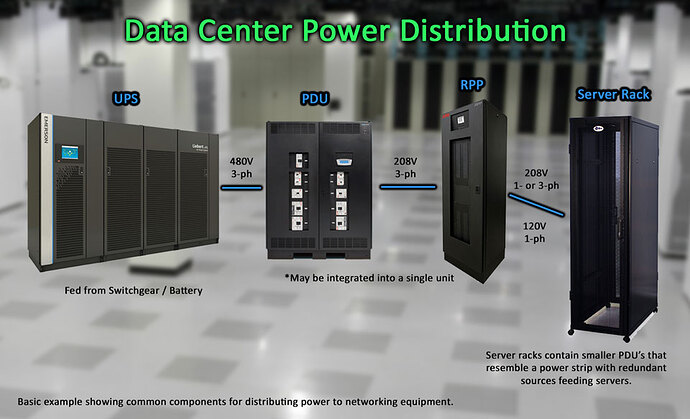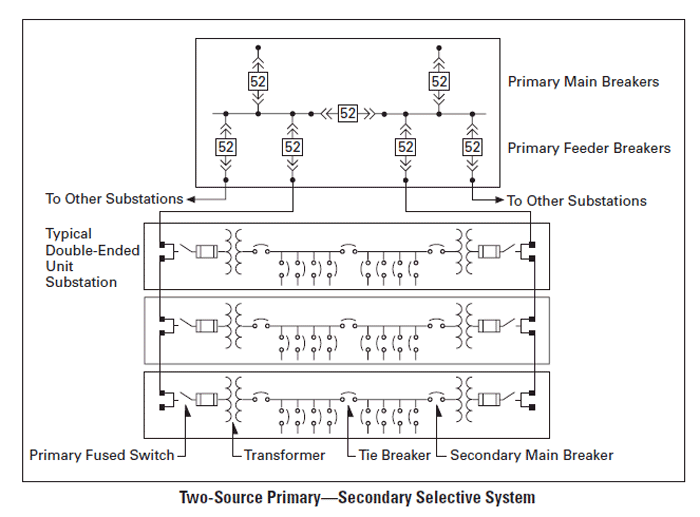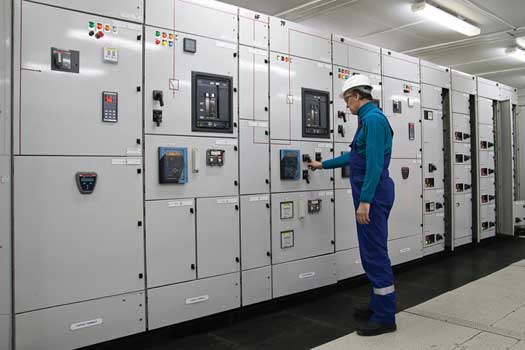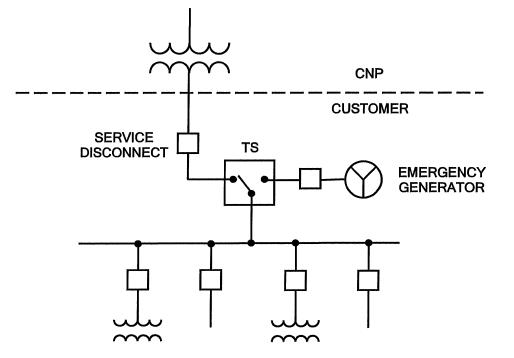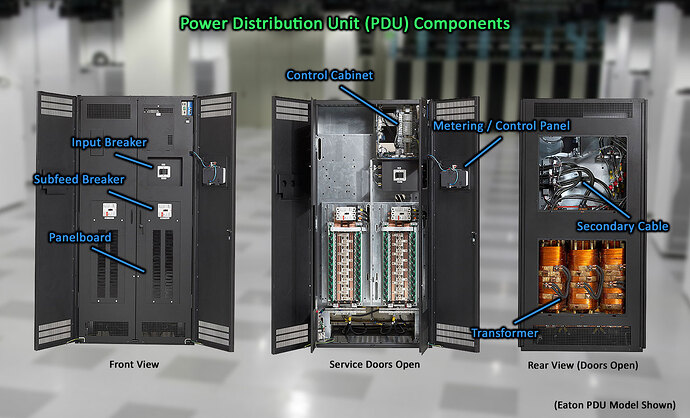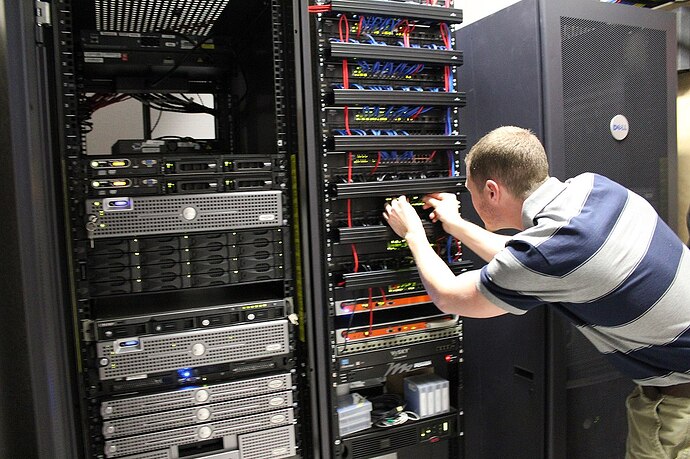Data Center Power Distribution Example Power Flow. Photo: TestGuy.
In the modern age of information technology, the data center has become an essential part of government, education, and business enterprise. Responsible for storing the most critical and proprietary digital assets, there is no question that data centers play a vital role in our society.
Data centers across the world each contain thousands of servers that run non-stop around the clock. In 2013, the U.S. Department of Energy reported that data centers consumed about 100 billion kilowatt-hours of electricity, representing more than 2% of all U.S. electricity use.
Large corporations and government institutions typically build and manage their own data center in-house if they have the resources, while others may rent space from a provider. Data centers at this scale may be the size of entire city blocks and be equipped with enough electrical infrastructure to power an entire town.
In order to keep data centers running continuously and without interruption, several different sources of power and redundant systems must be kept in place and maintained at all times. The level of complexity will vary depending on the location and requirements of each data center but most large scale operations will include the following:
Medium Voltage Distribution
This is where power supplied from the local power company first enters the facility. Higher voltage is more efficiently distributed around the data center before stepping down to a lower voltage that can be utilized by the mechanical systems and networking equipment.
Medium voltage cables, switches, and transformers are the main components in this part of the system. The voltage level will depend on locality but 35kV is not uncommon.
In the selective secondary arrangement, the secondary main circuit breakers and secondary tie breaker of each unit substation are either mechanically or electrically interlocked to prevent parallel operation. Photo: EATON
Recommended: 10 Electrical Distribution System Arrangements Explained
Low Voltage Distribution
After the medium voltage is “stepped down” to a more suitable voltage via transformers (generally 480V) it will enter some form of switchgear or switchboard where the electrical loads can be “split” to various areas around the Data Center. Mechanical systems that are responsible for climate control, waste management, and fire suppression will be served by switchboards separate from those that supply power to networking and other mission critical systems.
Switchgear maintenance is essential for continued reliable operation. Photo: Twins Chip Electrical Industry
Recommended: Switchgear and Switchboard Inspection and Testing Guide
Emergency Systems
Data Centers are the home of critical network infrastructure that must have electrical power available at all times, which is achieved with backup emergency power systems. At this level of distribution, diesel/gas powered generators and automatic transfer switches are interconnected at the medium- or low-voltage distribution level.
Typical one-line diagram for an emergency power system. Photo: CNP.
This equipment is capable of powering the entire facility including mechanical systems within seconds in the event utility generation is lost. Depending on the scope and size of a data center operation, there may be more generators than actually needed to keep the facility running in the event of engine failure.
Some of the largest data centers in the United States are equipped with enough standby generator power to supply a small city. The Lakeside Technology Center in Chicago, for example, holds over 50 generators with a total capacity of 150,000 kW.
Uninterruptible Power Supply (UPS)
Additional backup power is supplied to networking equipment by means of an uninterruptible power supply (UPS). This type of equipment is fed by a normal power source from the low voltage distribution switchgear (480V or 208/120V) and also keeps a string of batteries fully charged on standby.
In the event of total power loss, the internal batteries can serve as a final lifeline for computer systems and exit lighting while temporary emergency power is restored. Depending on the size, a UPS can be capable of running critical data center equipment for several hours.
Recommended: 3 Simple, Yet Effective Tests for Battery Systems
Power Distribution Unit (PDU)
The power distribution unit is a device designed to distribute electrical power to servers, networking hardware, telecom equipment, and other devices located within a data center. It does not generate or condition power, but delivers AC power from an uninterruptible power supply (UPS, a generator, or utility power source.
Power Distribution Unit (PDU) Components. Photo: TestGuy.
PDU’s typically consist of a main input circuit breaker, an isolation output transformer, a monitoring/operation control panel, an integrated communication server, and a subfeed breaker system. The unit provides power distribution, voltage transformation, metering, status monitoring, and load profiling housed in a single, free-standing cabinet.
Recommended: Power Distribution Unit: Applications, Testing, and Maintenance
Remote Power Panel (RPP)
A Remote Power Panel (RPP) provides a means of extension from PDU’s or other power sources directly to server racks. This offers added distribution capacity in the event that a PDU may have ample power capacity, but no extra breaker or panelboard capacity for additional equipment.
RPP’s can be thought of like a sub panel for a PDU. They allow for more flexible data floor design since they can be placed virtually anywhere and provide a means for more localized maintenance shutdowns.
Server Rack
The final destination for the electrical journey is the server rack, which the is most critical component of the Data Center. The term “rack” refers to the physical structure that houses servers, cables, and other equipment.
The server rack is the most critical component of the Data Center. Photo: Wikimedia.
Everything will fit neatly into the framework, helping to stay organized and safely off the floor. Within the server rack are the computer systems and network infrastructure that provide online services and store important data across the internet. All other systems within the building exist to support keeping the server racks running efficiently.
